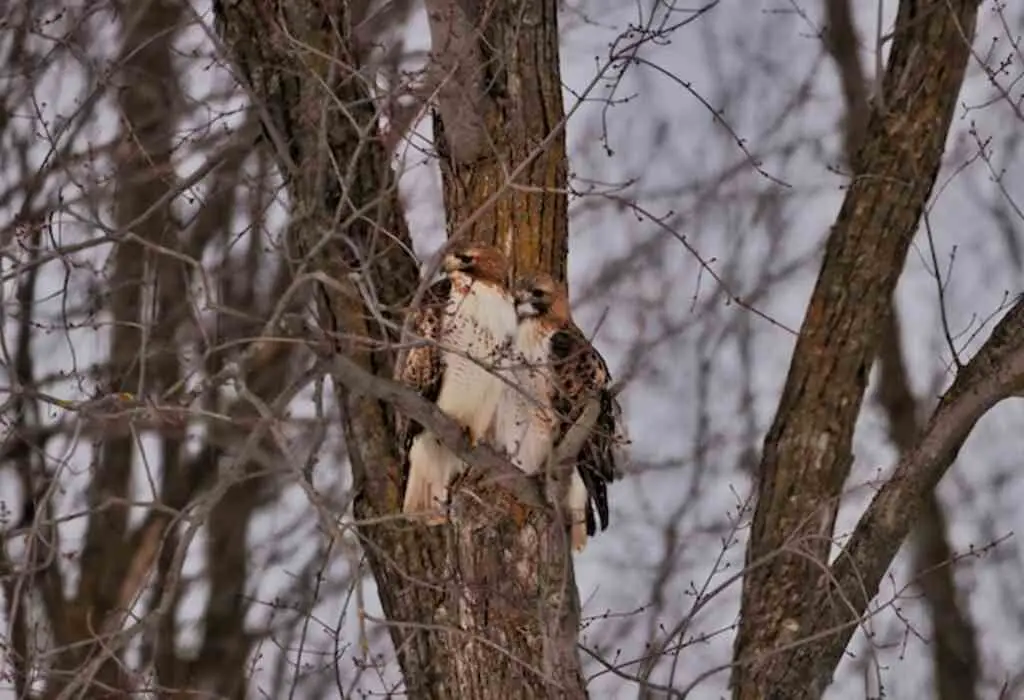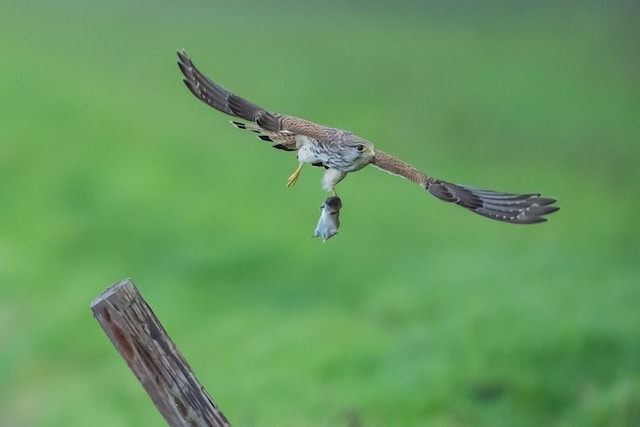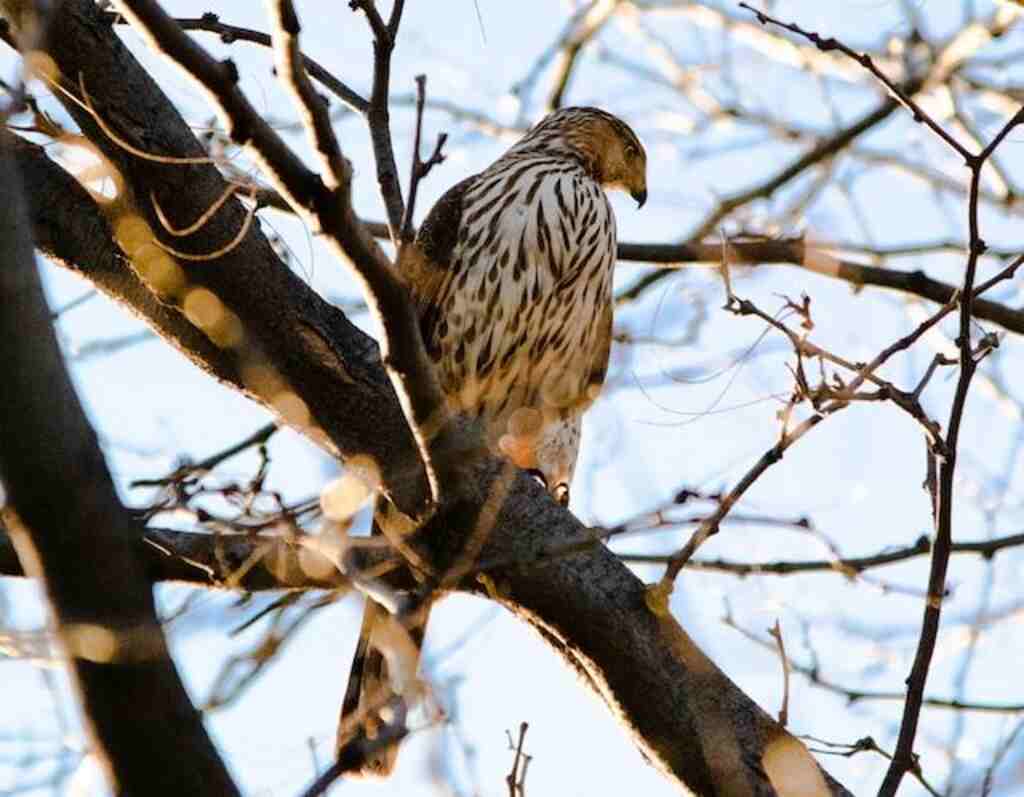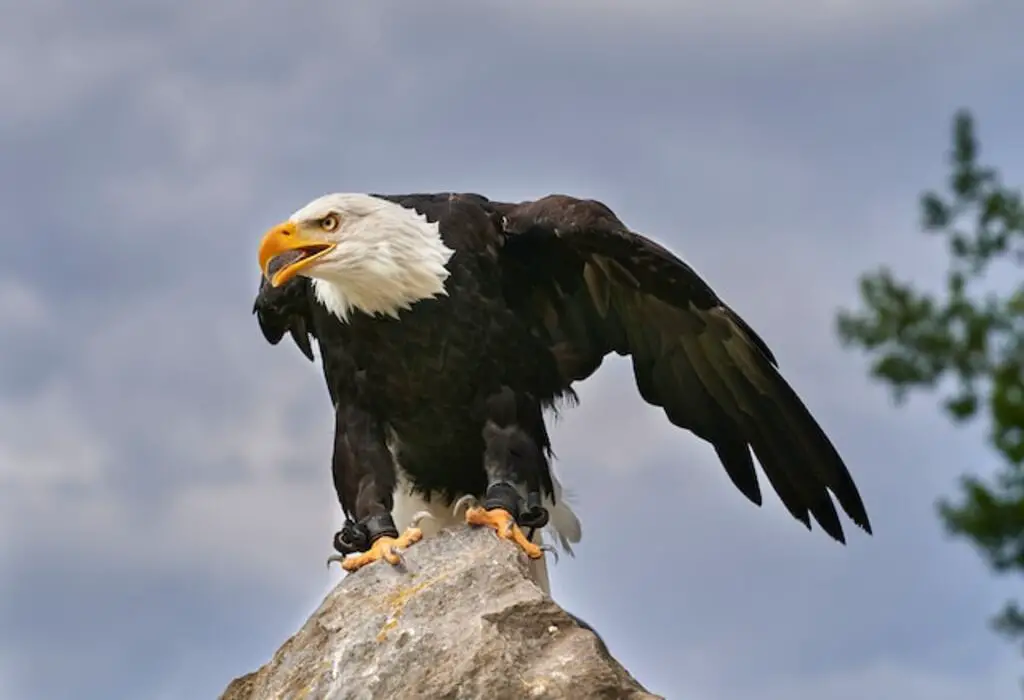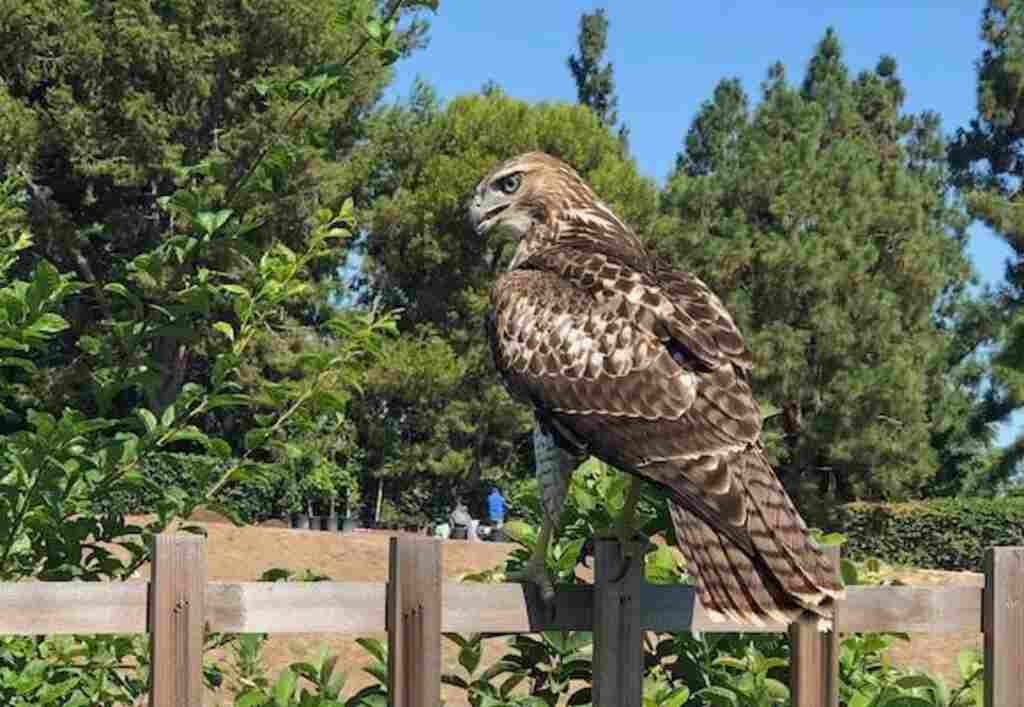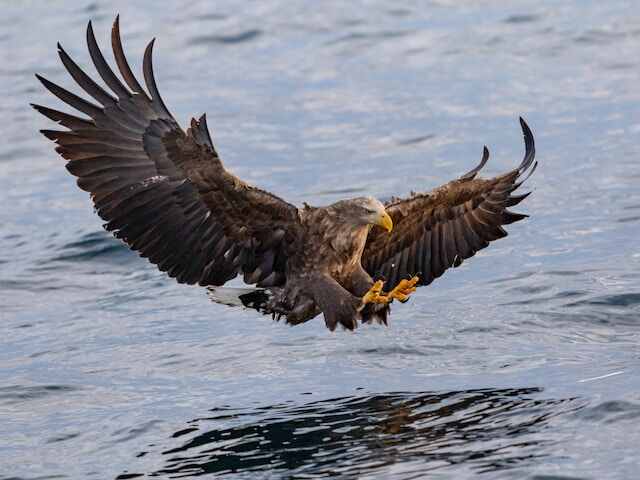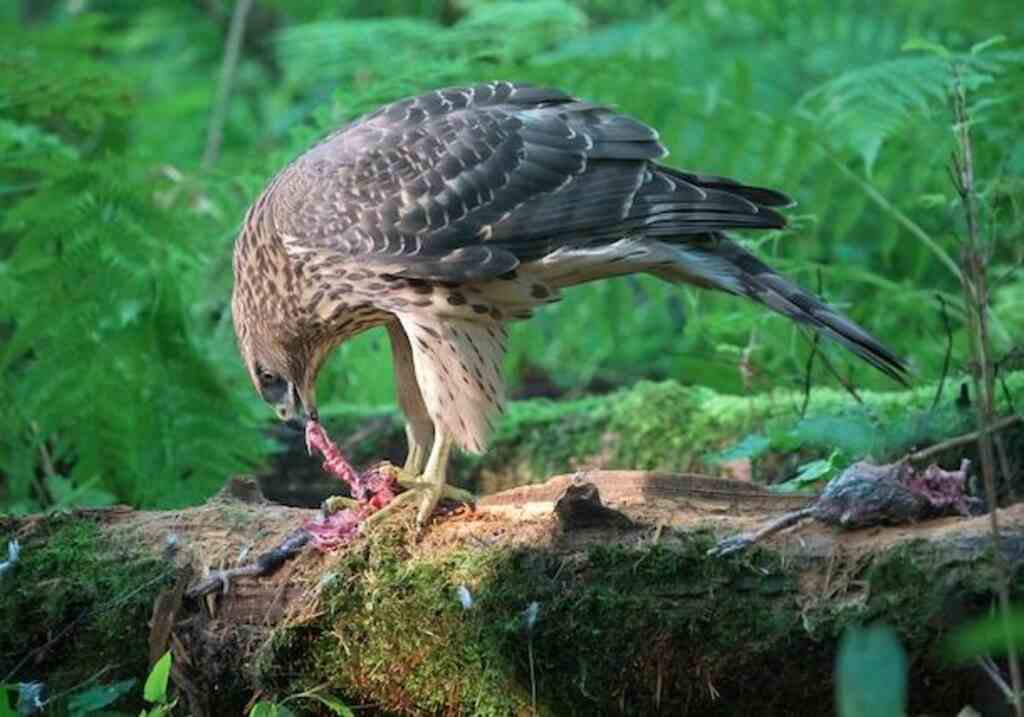Birds of prey, such as eagles and hawks, have long captivated our imagination with their majestic flight and predatory skills. But have you ever wondered what do birds such as eagles and hawks need energy for?
The answer lies in their remarkable adaptations and evolutionary history.
According to scientific theories, birds of prey require energy primarily for hunting and predation, flight and aerodynamics, metabolism and digestion, as well as migration and long-distance travel.
These birds have evolved specialized physiological and anatomical features that enable them to thrive in their environment.
Understanding the energy requirements of birds of prey is crucial for their conservation and management, especially in the face of human interactions and environmental factors that affect their energy availability.
In this article, we will delve into the fascinating world of eagles and hawks, exploring the intricate web of factors that contribute to their energy needs.
Join us on this journey as we unravel the secrets behind the extraordinary abilities of these captivating avian predators.
Table of Contents
- 1 Key Takeaways
- 2 What Do Birds Such As Eagles And Hawks Need Energy For
- 3 Energy Requirements of Birds of Prey
- 4 Hunting and Predatory Behavior
- 5 Flight and Aerodynamics
- 6 Metabolism and Digestion
- 7 Migration and Long-Distance Travel
- 8 Reproduction and Parental Care
- 9 Roosting and Resting
- 10 Environmental Factors and Energy Availability
- 11 Human Interactions and Conservation
- 12 Adaptations and Evolutionary History
- 13 Fascinating Facts and Trivia about Eagles and Hawks
- 14 Frequently Asked Questions
- 14.1 How do eagles and hawks obtain energy from their prey?
- 14.2 What are the specific energy requirements of different species of eagles and hawks?
- 14.3 How do birds of prey conserve energy during flight?
- 14.4 Do eagles and hawks have any special adaptations that help them acquire energy?
- 14.5 How do environmental factors such as weather and habitat availability affect the energy availability for eagles and hawks?
- 15 Conclusion
- 16 Author
Key Takeaways
- Birds of prey, like eagles and hawks, require energy for hunting, flight, metabolism, digestion, and migration.
- Eagles and hawks have specialized adaptations for efficient flight and aerodynamics, including wing shape and structure.
- Migration is observed in many bird species, including eagles and hawks, and they conserve energy during this time by minimizing unnecessary activities and utilizing favorable wind patterns.
- Reproduction and parental care also require significant energy allocation for courtship displays, nest-building, incubation of eggs, and feeding and protecting offspring.
What Do Birds Such As Eagles And Hawks Need Energy For
Birds such as eagles and hawks need energy for hunting, flight, metabolism, digestion, migration, reproduction, and parental care.
From capturing prey with precision to covering vast distances during migration, their energy requirements support their survival and impressive abilities.
Energy Requirements of Birds of Prey
Birds of prey, such as eagles and hawks, necessitate energy for their essential activities, including hunting, flight, and reproduction, which are crucial for their survival and perpetuation as powerful and majestic creatures of the sky.
These birds have evolved remarkable hunting strategies to capture their prey efficiently. They possess keen eyesight and exceptional aerial agility, allowing them to spot and pursue their targets effectively.
Birds of prey exhibit various hunting techniques, such as soaring, hovering, or perching, depending on their specific prey selection.
They may use a combination of stealth, speed, and surprise to catch their victims, relying on their sharp talons and powerful beaks to secure a successful catch.
Understanding the energy requirements of birds of prey is essential for comprehending their hunting and predatory behavior, which will be explored in the subsequent section.
Hunting and Predatory Behavior
Predatory avian species, like eagles and hawks, rely on sufficient energy stores to support their hunting activities and sustain their survival.
These birds utilize a variety of hunting techniques to capture their prey, such as soaring at high altitudes or perching in strategic locations.
They possess keen eyesight and exceptional agility, allowing them to spot and pursue potential prey with precision.
Eagles and hawks exhibit selective prey selection, targeting a range of animals including small mammals, reptiles, fish, and birds.
Their hunting success depends on factors such as prey availability, habitat suitability, and seasonal variations.
By efficiently acquiring energy through hunting, these birds maintain their energy reserves to support other important activities such as mating and migration.
Transitioning into the subsequent section about flight and aerodynamics, the energy acquired through successful hunting enables these birds to execute their impressive aerial maneuvers.
Flight and Aerodynamics
Utilizing their remarkable aerial abilities, avian species like eagles and hawks are able to navigate the skies with exceptional precision and efficiency, thanks to their understanding of flight mechanics and aerodynamics.
These birds have evolved specific adaptations that enable them to take advantage of aerodynamic principles and maximize their flight performance.
One crucial adaptation is their wing shape and structure. The wings of eagles and hawks are long and broad, with a significant surface area.
This allows for efficient lift generation and maneuverability during flight. The curved shape of their wings also helps to reduce drag, enabling them to achieve high speeds and maintain stable flight.
By employing these aerodynamic features, eagles and hawks are able to conserve energy and cover vast distances in search of prey.
Transitioning into the subsequent section about metabolism and digestion, these birds must fuel their demanding flight capabilities with a high-energy diet.
Metabolism and Digestion
One intriguing fact regarding the metabolism and digestion of eagles and hawks is that their high-energy diet consists primarily of small mammals, such as mice and rabbits, which provide the necessary nutrients for their demanding flight capabilities.
These birds have a high metabolic rate, allowing them to efficiently convert the energy from their food into the power needed for sustained flight.
Additionally, their digestive system is specialized for quick nutrient absorption, enabling them to extract as much energy as possible from their prey.
This efficient metabolism and digestion are essential for these birds to maintain their energy levels and support their active lifestyle.
Moving forward to the topic of migration and long-distance travel, it is interesting to note how these birds utilize their energy reserves to undertake these incredible journeys.
Migration and Long-Distance Travel
Migration is a phenomenon observed in many bird species, including eagles and hawks, where they undertake long-distance journeys to reach their breeding or wintering grounds.
During migration, birds need to conserve energy to sustain themselves during the arduous journey.
They achieve this by minimizing unnecessary activities, such as reducing their flight speed and avoiding unnecessary movements, and by fueling up before embarking on long-distance flights.
Energy Conservation during Migration
To ensure their survival during long-distance flights, birds such as eagles and hawks must efficiently conserve energy.
These birds employ various energy-saving techniques during migration, which enable them to cover vast distances without exhausting their energy reserves.
One such technique is finding and utilizing favorable wind patterns to reduce the energy expenditure required for flight.
By strategically choosing their migratory routes, birds can take advantage of tailwinds that provide a boost to their flight speed and reduce the effort needed to maintain altitude.
Additionally, birds often fly in V-shaped formations, known as thermals, which allow them to take advantage of updrafts and conserve energy.
These formations create an aerodynamic advantage, reducing air resistance and enabling birds to fly more efficiently.
By conserving energy through these techniques, birds can maximize their fuel reserves and ensure a successful long-distance migration.
Transitioning into the subsequent section, birds also need to efficiently fuel themselves for these demanding flights.
Fueling for Long-Distance Flights
During migration, birds such as eagles and hawks utilize energy conservation strategies to endure their long-distance flights. However, the success of their journeys heavily relies on their ability to fuel up efficiently.
Fueling strategies for endurance flights involve consuming large amounts of energy-rich food to meet the high energy demands of prolonged flight.
These birds need to accumulate sufficient fuel reserves to sustain them throughout their journey, which can span thousands of kilometers.
Weather conditions also play a crucial role in energy expenditure during long-distance flights.
Birds must navigate through various weather patterns and adapt their flight patterns accordingly to minimize energy expenditure.
Adverse weather conditions, such as headwinds, can significantly increase energy requirements.
Understanding the impact of weather conditions on energy expenditure is essential for conservation efforts and ensuring the survival of these incredible avian migrants.
Transitioning to the subsequent section about reproduction and parental care, birds’ energy expenditure shifts to the challenges of raising offspring.
Reproduction and Parental Care
Reproduction and parental care in birds such as eagles and hawks necessitate a significant amount of energy allocation for courtship displays, nest-building, incubation of eggs, and feeding and protecting their offspring.
These birds exhibit high levels of parental investment, engaging in elaborate courtship rituals to attract mates and establish pair bonds.
Once a pair bond is formed, they engage in nest-building activities, constructing intricate structures to provide a safe environment for their eggs and offspring.
Incubation of eggs requires constant warmth and protection, demanding continuous energy expenditure.
After hatching, parents must diligently feed and protect their young, ensuring their survival and growth. To evoke an emotional response, consider the following table:
| Parental Investment | Nesting Behavior | Emotional Response |
|---|---|---|
| Elaborate courtship displays | Intricate nest-building | Sense of awe and admiration |
| Constant incubation of eggs | Careful protection of offspring | Feeling of tenderness and nurturing |
| Provisioning and feeding young | Vigilance and defense of nest | Appreciation for the dedication and sacrifice |
Reproduction and parental care are crucial aspects of the lives of these magnificent birds, highlighting their remarkable commitment to ensuring the survival of their species.
In the subsequent section about ‘roosting and resting’, we will explore how these birds replenish their energy reserves for their demanding lifestyles.
Roosting and Resting
Roosting and resting are essential activities for birds like eagles and hawks. They allow these birds to replenish their energy reserves and prepare for the demands of their active lifestyles.
These birds have specific perching habits, often choosing high vantage points such as treetops or cliffs for roosting. By selecting secure locations, they can rest without the fear of predation.
During this time, their metabolic rate decreases, resulting in reduced energy expenditure.
This is crucial for conserving energy, as these birds have high daily energy demands due to their hunting and flying activities.
Roosting and resting also provide an opportunity for these birds to preen their feathers, ensuring optimal flight performance.
Understanding the importance of roosting and resting in the lives of eagles and hawks sets the stage for exploring the influence of environmental factors and energy availability in the subsequent section.
Environmental Factors and Energy Availability
Environmental factors and energy availability significantly shape the survival and success of avian species like eagles and hawks.
These birds require energy for various activities, including foraging and hunting. Energy availability plays a crucial role in determining their foraging strategies and overall fitness.
Birds such as eagles and hawks rely on environmental cues, such as weather conditions and prey availability, to determine when and where to forage.
They are highly adapted to efficiently extract energy from their environment, using their keen eyesight and powerful flight muscles to capture prey.
By understanding the energy requirements and foraging strategies of these birds, conservation efforts can be better tailored to ensure their survival.
Transitioning to the subsequent section about human interactions and conservation, it is important to consider the impact of human activities on the energy availability and foraging behaviors of these birds.
Human Interactions and Conservation
Human interactions and conservation efforts play a crucial role in shaping the survival and long-term viability of avian species like eagles and hawks, highlighting the need for a comprehensive understanding of the impact of human activities on the energy availability and foraging behaviors of these birds.
- Human wildlife conflict: The encroachment of human settlements into natural habitats often leads to conflicts between humans and birds of prey. These conflicts arise from competition for resources and potential predation on livestock, resulting in reduced energy availability for eagles and hawks.
- Captive breeding programs: To mitigate the negative impact of human activities, conservation organizations have established captive breeding programs for endangered eagle and hawk species. These programs aim to increase population sizes and genetic diversity, ensuring the long-term survival of these birds.
- Habitat restoration: Efforts to restore and protect natural habitats provide essential foraging grounds and nesting sites for eagles and hawks. Preserving these habitats ensures a stable energy supply for these birds.
- Conservation education: Raising awareness among the public about the importance of conserving eagles and hawks helps reduce human activities that negatively impact their energy availability. Through education, individuals can make informed decisions that promote coexistence with these magnificent birds.
These human interactions and conservation efforts have significant implications for the energy needs and survival of eagles and hawks. Understanding the impact of human activities is crucial for developing effective conservation strategies.
Transitioning into the subsequent section about ‘adaptations and evolutionary history,’ it is essential to explore how these birds have evolved to thrive in their environments.
Adaptations and Evolutionary History
The study of adaptations and evolutionary history in birds, particularly eagles and hawks, reveals fascinating insights into their specialized anatomical and physiological features.
One key area of interest is the evolution of flight and prey capture, which has shaped their ability to efficiently navigate and capture prey.
Additionally, their specialized anatomical features, such as sharp talons and strong beaks, have evolved to enhance their hunting capabilities.
Understanding these adaptations provides valuable information for conservation efforts and furthering our knowledge of avian evolution.
Evolution of Flight and Prey Capture
Birds such as eagles and hawks require energy for the evolution of flight and efficient prey capture. The evolution of flight has provided these birds with several evolutionary advantages in hunting.
Flight allows them to cover large distances quickly, search for prey from a vantage point, and pursue prey in the air. This ability to fly has also enabled them to access different habitats and food sources.
In terms of prey capture, eagles and hawks have developed specialized hunting techniques.
They use their keen eyesight to spot potential prey from great distances, and then employ their strong wings and sharp talons to dive and capture their prey.
This combination of flight and prey capture strategies has made eagles and hawks highly efficient predators.
The next section will explore their specialized anatomical and physiological features that further enhance their hunting abilities.
Specialized Anatomical and Physiological Features
Birds such as eagles and hawks possess specialized anatomical and physiological features that allow them to efficiently capture prey and sustain their flight. These adaptations are essential for their survival and the acquisition of energy.
One crucial aspect is their metabolic rate, which is remarkably high compared to other animals. This elevated metabolic rate enables them to generate the energy necessary for flight and hunting.
Additionally, eagles and hawks have efficient energy storage and utilization mechanisms.
They have well-developed digestive systems that efficiently extract nutrients from their prey, allowing for effective energy utilization.
Furthermore, these birds have adaptations in their respiratory system, such as large lungs and efficient oxygen delivery, maximizing their energy production during flight.
Overall, these specialized features enable eagles and hawks to sustain their energy requirements and thrive in their natural habitats.
Moving forward, let us explore fascinating facts and trivia about eagles and hawks.
Fascinating Facts and Trivia about Eagles and Hawks
Eagles and hawks require energy to sustain their impressive hunting abilities and maintain their powerful flight. These birds exhibit interesting behaviors and employ unique hunting strategies to obtain their food.
For instance, some species of eagles, such as the bald eagle, are known for their scavenging behavior and can often be seen stealing food from other birds or even mammals.
Hawks, on the other hand, rely more on their exceptional eyesight and agility to catch their prey.
They often soar high in the sky, scanning the ground for potential meals, and then dive down with incredible speed and precision to snatch their target.
To fuel these activities, eagles and hawks have highly efficient respiratory and circulatory systems that allow them to extract maximum oxygen from the air and deliver it to their muscles, ensuring sustained energy for their hunting endeavors.
Frequently Asked Questions
How do eagles and hawks obtain energy from their prey?
Eagles and hawks obtain energy from their prey through hunting techniques and prey selection. They rely on their sharp vision, agility, and powerful beaks and talons to capture and kill their target, allowing them to extract the necessary energy for survival.
What are the specific energy requirements of different species of eagles and hawks?
Birds of prey, such as eagles and hawks, have specific dietary needs and utilize various hunting techniques to obtain energy. Understanding the energy requirements of different species aids in their survival and conservation efforts.
How do birds of prey conserve energy during flight?
Birds of prey employ various strategies to conserve energy during flight. These include soaring in thermals to minimize flapping, adjusting wing shape to reduce drag, and utilizing favorable wind patterns. These adaptations optimize their efficiency and help them meet their energy demands.
Do eagles and hawks have any special adaptations that help them acquire energy?
Eagles and hawks possess remarkable adaptations that aid in acquiring energy. They employ special hunting techniques, incorporating keen eyesight and agile flight. Additionally, their unique digestive system efficiently extracts nutrients from their prey.
How do environmental factors such as weather and habitat availability affect the energy availability for eagles and hawks?
Weather impacts and habitat availability affect the energy availability for eagles and hawks. Environmental factors such as extreme weather conditions and changes in habitat quality influence the availability of food sources and ultimately impact the energy resources for these birds.
Conclusion
In conclusion, birds of prey such as eagles and hawks require energy for various aspects of their survival and behavior. They need energy for hunting and predatory behavior, which includes capturing and consuming prey.
Flight and aerodynamics also demand a significant amount of energy, as these birds rely on their wings to soar and hunt efficiently.
Metabolism and digestion play a crucial role in converting food into usable energy.
Additionally, migration and long-distance travel require substantial energy reserves for these birds to cover vast distances.
Despite the challenges posed by environmental factors and human interactions, eagles and hawks have adapted and evolved to efficiently obtain and utilize energy.
Overall, the energy requirements of these magnificent birds are vital for their survival and success in their respective ecosystems.
Anticipated objection: Some may argue that the energy requirements of birds of prey are excessive and unnecessary.
However, it is important to acknowledge that these energy demands are necessary for their specialized hunting techniques, flight capabilities, and survival strategies.
Birds of prey have evolved to occupy specific niches in their ecosystems, and their energy requirements are a result of millions of years of adaptation and natural selection.

